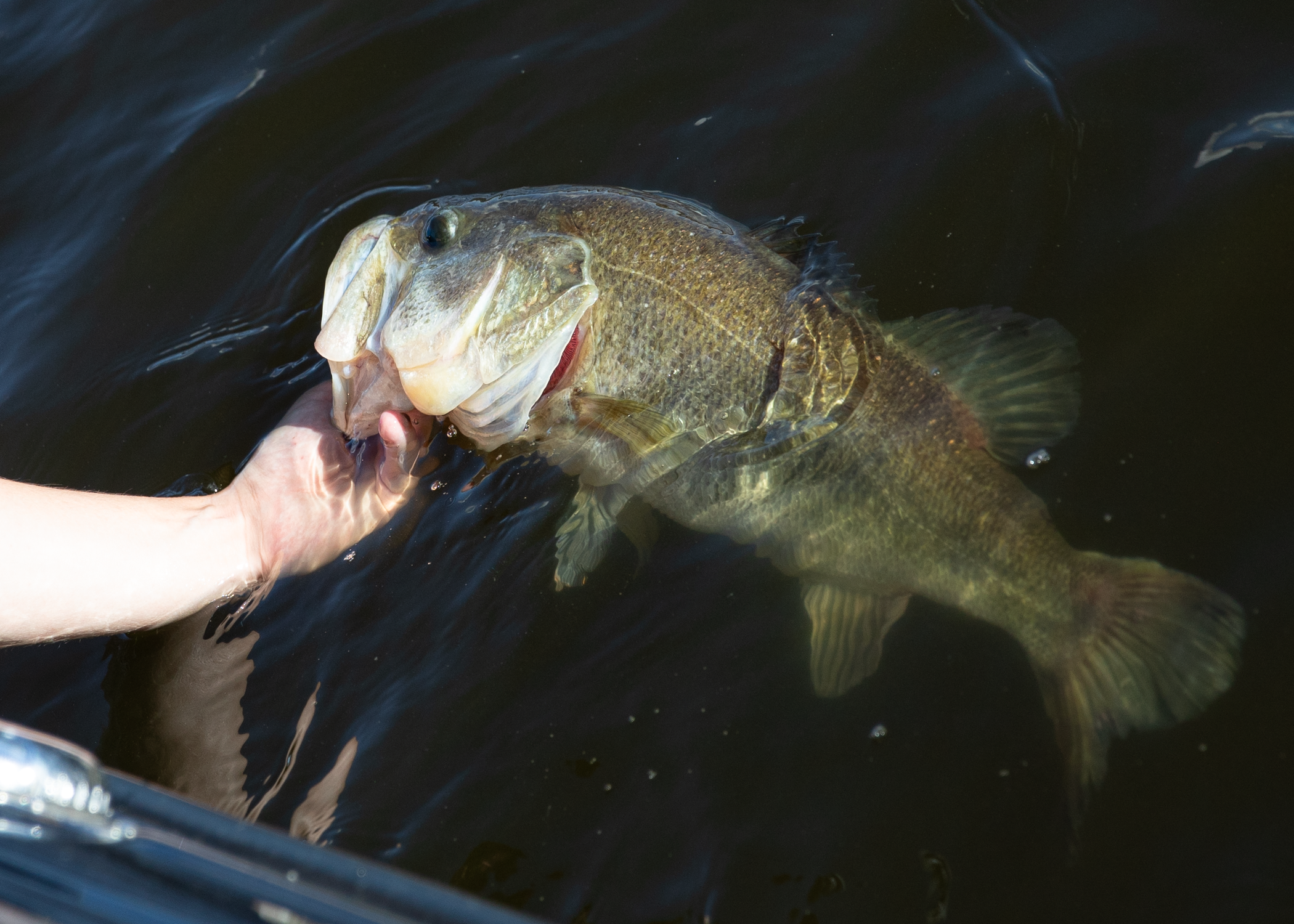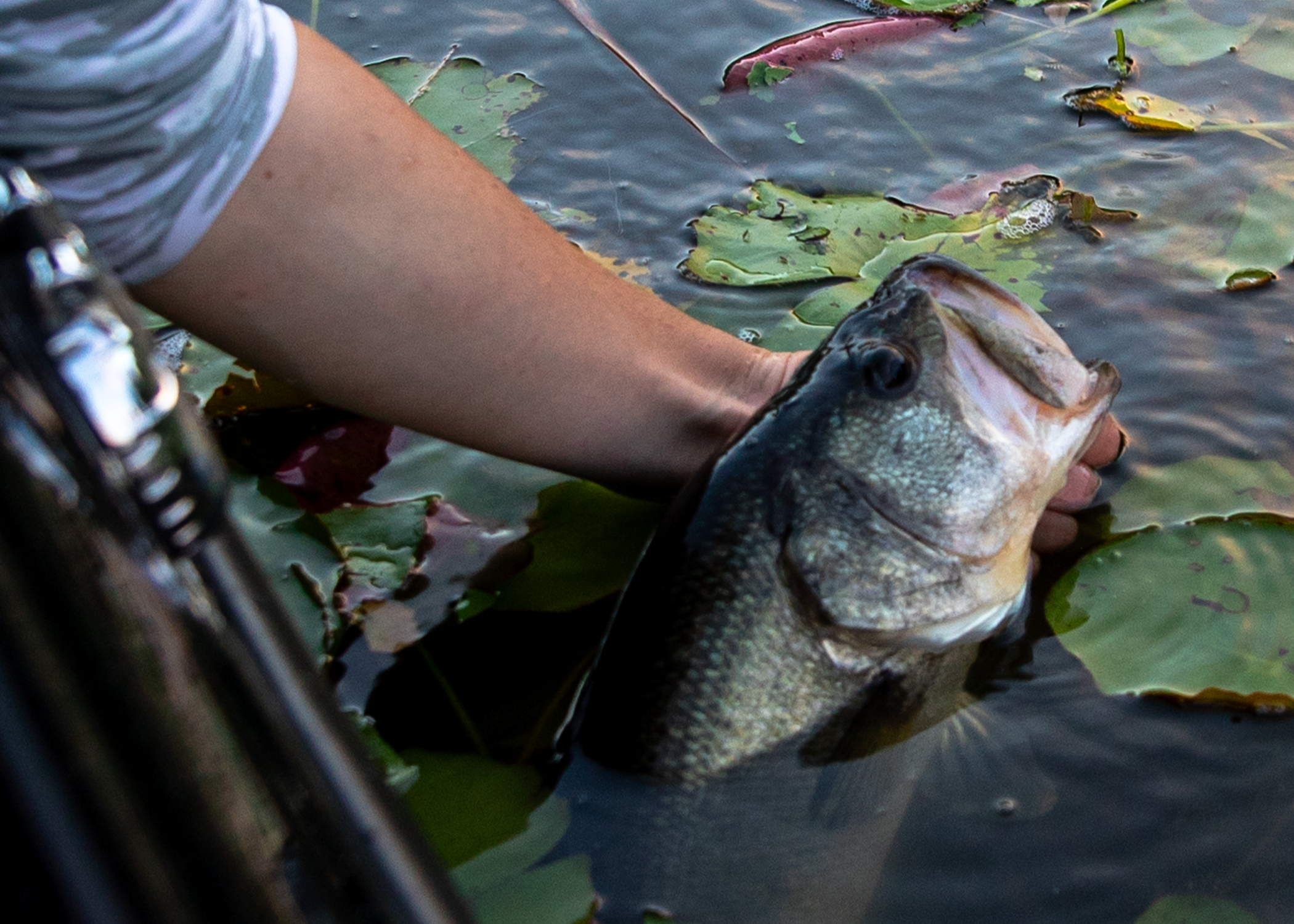Rodman Reservoir Bass Fishing: An Expert’s Complete Guide
By: FishUSA Staff
November 24, 2025
Rodman Reservoir (Lake Ocklawaha) is Florida’s timber-filled trophy factory—part river, part lake, all business. I’ve punched hyacinth mats here under a noon sun, slow-rolled big worms across river-channel edges, and watched a wild shiner disappear in a boil the size of a trash can lid. This guide distils those days into a practical, season-by-season plan with spot-by-spot tactics, gear that holds up to the timber, and on-the-water intel to help you fish smarter and safer.
Rodman Reservoir (Lake Ocklawaha) is Florida’s timber-filled trophy factory—part river, part lake, all business. I’ve punched hyacinth mats here under a noon sun, slow-rolled big worms across river-channel edges, and watched a wild shiner disappear in a boil the size of a trash can lid. This guide distils those days into a practical, season-by-season plan with spot-by-spot tactics, gear that holds up to the timber, and on-the-water intel to help you fish smarter and safer.
Table of Contents

Why Rodman Produces Giants
Rodman is a flooded river swamp built on the Ocklawaha. Think: standing timber, submerged stump fields, eelgrass and hydrilla lanes, plus miles of reeds and hyacinth mats. That blend of permanent cover and river current fattens bass fast. A long Florida growing season, abundant shad/bluegill/crayfish forage, and periodic water-level drawdowns that reset habitat keep the population robust. It’s a live-bait stronghold (wild shiners) and an artificial-bait playground if you like to flip, pitch, and grind big plastics through gnarly cover.
Seasonal Bass Patterns (Month-by-Month)
- January: Pre-spawn staging along the old river channel, oxbow mouths, and inside turns. Slow roll big worms and jigs on hard edges; live shiners near timber produce brutes. Sunny afternoons push some fish to shallow wood for brief windows.
- February: First big waves slide shallow. Flip/pitch creature baits into pencil reeds, pads, and isolated wood in 2–6 ft. Craw-colored lipless and flat-sides tick hydrilla outside spawning lanes.
- March: Peak shallow bite. Sight-fish in clearer pockets; in stain, pitch jigs/texas rigs to dark spots in the pads. A shiner under a float beside a laydown is as close to a sure thing as Rodman gets.
- April: Spawn lingers; post-spawn feed starts. Work prop baits and walkers over eelgrass in the a.m., then slide to channel edge brush with a Carolina rig mid-day.
- May: Shad spawn at daybreak on hard edges (riprap, wood, grass). Chatterbaits and swim jigs shine early; by late morning, drag a magnum worm on shell or hard spots adjacent to the river swing.
- June: Heat moves fish to shade/current. Punch hyacinth mats with 1–1.5 oz tungsten, 65 lb braid, and compact baits. Current at the river mouth/lock areas sparks short, violent flurries—time them.
- July: Summer pattern locked. Fish early/late with frogs over cheese; mid-day, flip vertical wood or soak shiners on the shady side of big timber. Night fishing with big worms on channel edges can be outstanding.
- August: Dog days—either go finesse on edges (speed worm, lighter texas) or go heavy and punch. Afternoon thunderstorms often trigger brief reaction bites—have a spinnerbait ready.
- September: Transition. Young shad roam in the backs of runs and oxbows. Cover water with squarebills, small walkers, and finesse swimbaits until you intersect bait.
- October: Peak fall feed. Wind-blown eelgrass lanes and points light up with chatterbaits/lipless. River bends with wood stack better fish—jig and big worm time.
- November: Bass slide back toward the channel; jerkbaits and lipless on outside grass lines, and jigs on hard breaks. Shiners near deep timber tempt true heavies.
- December: Cool water concentrates fish on classic winter structure. Slow down: football jigs, big worms, and shiners around channel swings, bends, and deep laydowns.
Top Areas To Target Bass & How to Fish Them
Kenwood Recreation Area & The Timber
Launching at Kenwood puts you in the heart of Rodman’s flooded forest. Idle lanes carefully, then target standing timber edges and stumps that border eelgrass. Work a texas-rig or jig down each side of a tree; if bait is present on electronics, soak a wild shiner. In low light, a walking topwater over grass lanes can draw savage strikes.
Orange Springs & Upper Pool Flats
Here the reservoir opens into shallow, grass-rich flats broken by pad fields and scattered timber. In prespawn, fish the outer grass edges with lipless/flat-sides. During spawn, flip the denser pad clumps and any isolated wood near drains. After fronts, slide to the nearest depth change with a Carolina rig.
Ocklawaha River Channel Swings
The old river snakes through Rodman and is the season-long anchor. Mark inside/outside bends, points where secondary ditches meet, and any hard spots. Drag a mag worm or football jig uphill from the channel lip. When current moves (rain, discharge changes), a medium-diver or spinnerbait can light up.
Deep Creek & Feeder Run Mouths
Where creeks meet the pool, you get fresh water, oxygen, and roaming bait. Early/late, throw walkers and swimbaits across the mouth. When sun gets high, pitch to dark spots—root balls, laydowns, reed clumps—and let a creature bait soak. A shiner under a float at the seam is deadly.
Hyacinth & Mixed-Mats (Throughout)
Rodman’s mats are bass hotels. Target the edges with shade and flow, and any place mats pin to wood. Punch with 1–1.5 oz tungsten and a compact bait, pegged tight. Many bites come on the initial drop through the “ceiling.”
Cross Florida Barge Canal / Buckman Lock Vicinity
Current influence around the canal/lock areas can fire a reaction bite. Cast up-current with spinnerbaits/chatterbaits and let the flow do the work. When it slows, drag a worm on the first hard edge. Mind boat traffic and changing flow.
Rodman Dam Tailrace (Downstream)
Below the dam, current seams and eddies stack fish when discharge is up. Heavier spinnerbaits, swimbaits, and jigs score here. Wear a PFD and use caution—current and turbulence can be significant.

Bass Tactics, Lures & Boat Setup
Presentations That Consistently Produce
- Flip/Punch Program: Heavy braid (65 lb), 7’6”–8’ heavy rods, 1–1.5 oz tungsten, compact creatures and beavers. Target hyacinth, pennywort, and mixed mats, plus vertical wood.
- Channel-Edge Grind: Magnum straight-tail worms, football jigs, and Carolina rigs along old river swings, oxbow points, and shell/hard spots you find on sonar.
- Grass Reaction: Lipless and flat-sided cranks in cooler months; chatterbaits and swim jigs when hydrilla/eelgrass tops out. Tick the tops—don’t plow them.
- Live Shiner Play: Size 4/0–5/0 circle or kahle hook, 20–30 lb fluoro/mono leader to 40–50 lb braid mainline. Float it beside timber or suspend it just off grass edges near bait.
- Topwater Windows: Walkers, prop baits, and frogs at first/last light or pre-front. Focus on lanes between grass and wood.

Electronics & Boat Control
- Side/Forward Imaging: Trace the old river, find secondary ditches, brush, and isolated stumps off the obvious lines.
- Waypoints & Angles: Mark where you get bit and repeat the exact cast angle (often up-current to down-current).
- Anchors & Poles: Shallow-water anchors (or a stout push pole) are invaluable in mats and timber. Spot-Lock is gold on channel edges in wind.
Practical Tips & Safety
- Idle Unknown Water: Stumps everywhere. Follow marked lanes and never “shortcut” across the flats at speed.
- Fronts & Pressure: After bluebird fronts or heavy weekend pressure, downsize (speed worm, smaller creature), lengthen leaders, and slow your fall rate.
- Drawdowns Happen: Periodic water-level drawdowns improve habitat but change access routes. Check current levels and closures before you go.
- Bring a Plug & Tools: Timber eats props and skegs. A spare prop pin, basic tools, and a real push pole save days.
- Wildlife & Weather: Gators are common; keep hands inside the boat when landing fish. Dense fog in winter—run lights and take it slow.
Licenses, Rules & Access
You’ll need a valid Florida freshwater fishing license (age requirements/exemptions apply). Rodman generally follows Florida’s black bass rules; some waters occasionally receive special regulations—always verify the latest Florida Fish & Wildlife Conservation Commission (FWC) guidance before your trip. Popular ramps include Kenwood Recreation Area, Rodman Dam/East & West, Orange Springs, and Eureka; availability can vary with water levels and maintenance.
Rodman Reservoir FAQs
What’s the best time of year for a trophy at Rodman?
Late winter through spring (February–April) aligns peak prespawn/spawn with stable warming trends—your best window for true giants. Post-frontal bluebird days are tougher; warm, overcast south-wind days are magic.
Do I need live shiners to catch big fish?
No, but they’re the highest-percentage route for a single giant. If you prefer artificials, commit to flipping/punching, big worms on channel edges, and reaction bites on prime weather shifts.
Are there safe running lanes?
Yes, but stay inside marked lanes and idle anywhere uncertain. Electronics and updated mapping chips help—timber shifts with storms and fluctuating water.
What line should I use around all that wood?
For flipping/punching, 65 lb braid. For worms/jigs on edges, 17–25 lb fluorocarbon. For shiners around timber, a braid mainline with a 20–30 lb mono/fluoro leader balances toughness and stealth.
Is Rodman kayak-friendly?
In calm conditions and protected pockets, yes—but treat it with respect. Wind, boat traffic, and submerged timber demand caution. Launch close to your target water and avoid long, exposed crossings.
How do drawdowns affect fishing?
They often improve fishing by consolidating bass and refreshing vegetation. Routes and ramps can change—check water levels and notices before launching.
Final Thoughts
Rodman rewards anglers who embrace its personality: big cover, big baits, and deliberate presentations. Graph the river, punch the mats, and time your reaction windows around weather and flow. Respect the timber, adapt to water levels, and you’ll understand why this reservoir keeps producing the kind of bass that haunt gear catalogs—and anglers’ dreams.
Shop Bass Tackle & Gear

